|
|
|
Sort Order |
|
|
|
Items / Page
|
|
|
|
|
|
|
| Srl | Item |
| 1 |
ID:
069857
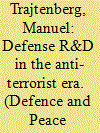

|
|
|
| 2 |
ID:
182970
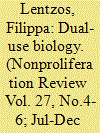

|
|
|
|
|
| Summary/Abstract |
At a time of heightened concern about potential future biological-weapons threats, this article considers how the international community can use the Biological and Toxin Weapons Convention framework to strengthen compliance monitoring of rapidly increasing dual-use capacities around the globe. It presents three conceptual layers within the treaty regime which states can draw from to inform their compliance judgments: one legally binding, one politically binding, and one wholly voluntary. The article outlines how these were established and how they have been used so far, and argues for an incremental, inclusive, practical, and forward-looking approach to evolving these structures to better manage perceptions of the intent behind dual-use capacities, and to further trust between states.
|
|
|
|
|
|
|
|
|
|
|
|
|
|
|
|
| 3 |
ID:
190703
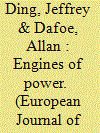

|
|
|
|
|
| Summary/Abstract |
Major theories of military innovation focus on relatively narrow technological developments, such as nuclear weapons or aircraft carriers. Arguably the most profound military implications of technological change, however, come from more fundamental advances arising from ‘general-purpose technologies’ (GPTs), such as the steam engine, electricity, and the computer. Building from scholarship on GPTs and economic growth, we argue that the effects of GPTs on military effectiveness are broad, delayed, and shaped by indirect productivity spillovers. We label this impact pathway a ‘general-purpose military transformation’ (GMT). Contrary to studies that predict GPTs will rapidly diffuse to militaries around the world and narrow gaps in capabilities, we show that GMTs can reinforce existing balances if leading militaries have stronger linkages to a robust industrial base in the GPT than challengers. Evidence from electricity's impact on military affairs, covering the late nineteenth and early twentieth centuries, supports our propositions about GMTs. To probe the explanatory value of our theory and account for alternative interpretations, we compare findings from the electricity case to the military impacts of submarine technology, a non-GPT that emerged in the same period. Finally, we apply our findings to contemporary debates about artificial intelligence, which could plausibly cause a profound GMT.
|
|
|
|
|
|
|
|
|
|
|
|
|
|
|
|
| 4 |
ID:
184112


|
|
|
|
|
| Summary/Abstract |
Export controls of dual-use products and sanctions on respective items are highly regulated in the European Union (EU). However, we find multiple instances of implementation and application problems of dual-use control in the Member States. To explain this puzzling observation, we investigate the relationship between the institutional design of sanctions and their subsequent implementation and application. Drawing on rational design theory, we argue that even if coherence is the EU’s stated goal, the institutional design of the current dual-use export control regime is inadequate to provide for coherence. National licensing decisions and a constant need for the interpretation of contingent rules in the implementation and application of dual-use sanctions are structural challenges to establish a coherent European policy. The relationship between institutional design and coherence, which we investigate in the context of sanctions, is not specific to the EU. Instead, we offer a novel conceptual and analytical tool to study the expected degree and causes of (in-)coherence in the implementation and application of any regime of international sanctions.
|
|
|
|
|
|
|
|
|
|
|
|
|
|
|
|
| 5 |
ID:
075775
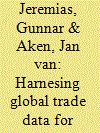

|
|
|
|
|
| Publication |
2006.
|
| Summary/Abstract |
Unlike treaties dealing with nuclear and chemical weapons, the Biological Weapons Convention still lacks formal verification measures, 31 years after entering into force. Here we propose a global export-import monitoring system of biological dual-use items as an additional measure for a web of biological arms controls that could complement traditional export controls. We suggest that such a measure may help to guide consultation or verification processes in the biological area.
|
|
|
|
|
|
|
|
|
|
|
|
|
|
|
|
| 6 |
ID:
182962


|
|
|
|
|
| Summary/Abstract |
This article examines the current state of the life sciences in the Russian Federation, which has potential health-security and biosecurity implications. Research involving advanced biotechnologies present opportunities for public-health advancement, but their dual-use capabilities raise biosecurity concerns that carry global economic and security implications. While experts have raised such concerns about possible Russian misuse of biotechnologies, Russia is not a top-tier nation for life sciences research, by many metrics. A better understanding of the current landscape of biotechnology and life-science research and investment in the Russian Federation will help to identify potential areas of concern and opportunities for international scientific engagement. This work builds on the substantial legacy of Raymond A. Zilinskas in his work to describe and analyze biodefense and biosecurity concerns in the Russian Federation and the Soviet Union.
|
|
|
|
|
|
|
|
|
|
|
|
|
|
|
|
| 7 |
ID:
140981
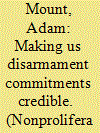

|
|
|
|
|
| Summary/Abstract |
President Barack Obama's 2009 commitment to pursue a world without nuclear weapons struck some as incredible given political resistance to arms control treaties and unilateral reductions. This viewpoint describes steps that can demonstrate a commitment to nuclear disarmament that do not rely on warhead dismantlement. These steps include the collation and release of nuclear data; the renovation and construction of facilities to new transparency standards; and the selective modification of conventional weapon systems. The steps may make a disarmament agreement more likely by assuaging the difficulty the United States will have committing to a verification scheme, given its capacity to circumvent such a scheme. A more credible disarmament pledge could also secure substantial fiscal and diplomatic gains.
|
|
|
|
|
|
|
|
|
|
|
|
|
|
|
|
| 8 |
ID:
142583
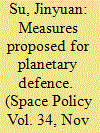

|
|
|
|
|
| Summary/Abstract |
Whereas the Earth is showered by extraterrestrial matters on a constant basis, most of them cannot survive the very high heat produced in their entry into the atmosphere to make a terrestrial impact. Impacts that are capable of inflicting terrestrial casualties and damages are even rarer. However, their consequences can be high, and even so nowadays with the change of human settlement patterns on the Earth. With the development of space science and technology, human beings are now capable of predicting possible impacts with some accuracy, and even minimizing the chance of actual collision. For the later purpose, many proposals have been put forward, which either employ weapons readily found on the Earth, or envisage newly developed technologies that could nevertheless be used for military purposes. This short note applies existent international law to these measures, and attempts to shed some light on their implications for ongoing discussions of space arms control.
|
|
|
|
|
|
|
|
|
|
|
|
|
|
|
|
| 9 |
ID:
182545
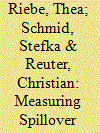

|
|
|
|
|
| Summary/Abstract |
Spillover effects describe the process of a company benefiting from the R&D activities of another one and thereby gaining an economic advantage. One prominent approach for measuring spillover effects is based on the analysis of patent citation networks. Taking social media analytics and knowledge economics into account, this paper presents a complementary approach to quantify spillover effects from defense to civilian research and development, analyzing 513 employment biographies from the social network LinkedIn. Using descriptive network analysis, we investigate the emigration of personnel of the German defense industry to other civilian producers. Thereby, our study reveals that in the last decade, employees of defense suppliers have changed positions significantly less often, with 3.24 changes on average than professionals who have worked more than 50% of their jobs in the civilian sector, having changed 4.61 times on average. Our work illustrates the churn behavior and how spillover effects between defense and civilian sectors can be measured using social career networks such as LinkedIn.
|
|
|
|
|
|
|
|
|
|
|
|
|
|
|
|
| 10 |
ID:
181878
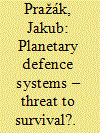

|
|
|
|
|
| Summary/Abstract |
The article explains why Weaponisation of outer space may soon be inevitable and that development of space weapons is a serious issue, especially in regard to dealing with sensitive dual-use technology. At the same time, the Earth may be threatened by incoming asteroids and comets, which may endanger humankind’s existence. Hence, it is advisable to develop effective planetary defence systems. However, the article claims that discussed planetary defence technology – kinetic impactor, nuclear explosion, gravity tractor and space tug, laser, and solar collector – have far-reaching dual-use consequences with potential for their weaponisation. Thus, the article argues in favour of greater transparency and surveillance mechanisms for dual-use and arms control. Moreover, the private sector should be involved in discussion since it may be contributing to negotiation processes and can ensure secure research and development, as well as operability of sensitive planetary defence systems.
|
|
|
|
|
|
|
|
|
|
|
|
|
|
|
|
| 11 |
ID:
105045


|
|
|
|
|
| Publication |
2011.
|
| Summary/Abstract |
This paper explores the potential civil use from the knowledge embedded in military technology. Using forward patent citation as indicator and from a comprehensive sample of 582 military patents with both US and European protection, we analysed the citations received for a military patents in subsequent patents. The technological origin of the citing patents will determine the use of a military technology. The methodology involves a descriptive analysis and the estimation of a multilevel logit model to determine the factors explaining the civilian use of military technology. The results show a differential behaviour among countries and types of military technology. Characteristics of firms, such as the technological experience of the company or institution in using military technology, are critical for a civilian use of the military knowledge.
|
|
|
|
|
|
|
|
|
|
|
|
|
|
|
|
| 12 |
ID:
012282
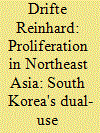

|
|
|
|
|
| Publication |
Spring\Summer 1997.
|
| Description |
72-82
|
|
|
|
|
|
|
|
|
|
|
|
|
|
|
|
| 13 |
ID:
187501
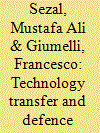

|
|
|
|
|
| Summary/Abstract |
State defence and security policies rely mostly on their military capabilities. The latter are ensured through research and development (R&D) as well as procurement, which are subject to defence industry dynamics. Furthermore the defence sector is heavily dependent on public funds; the latter can be more easily allocated if related R&D has a spill-over effect on the civilian sector, creating the potential for a bigger and more globally (or regionally) integrated market. This article investigates, then, how technology moves, and whether defence sector innovations create spin-offs in the civilian sector in the Netherlands. We aim to provide an industry-centred perspective on defence sector dynamics and potentials. For this, the article attempts to answer the following questions: Are defence technologies transferred to the civilian sector? What lessons can be derived from the Dutch case? To address these research puzzles the article’s theoretical framework builds on the technology-transfer literature in analysing the case study of the Netherlands. The basis for this is 23 interviews with representatives of Dutch defence companies that were carried out both in a workshop and in one-to-one settings in May and June 2020.
|
|
|
|
|
|
|
|
|
|
|
|
|
|
|
|
| 14 |
ID:
169316


|
|
|
|
|
| Summary/Abstract |
Outer space is a congested strategic domain. The issue of space debris mitigation is one of the key issues of safe space traffic. However, active debris removal (ADR) systems may raise concerns about their dual-use capabilities. In this article, the authors have analyzed the ADR systems focusing on their potential as space weapons. The article concludes that ADR systems can be utilized for harmful purposes, although with limited impact. This limited potential of ADR systems to become antisatellite weapons allow for the development of such systems keeping in place basic confidence and trust building measures. The authors believe the further commercialization of space sector could enhance the space debris mitigation efforts.
|
|
|
|
|
|
|
|
|
|
|
|
|
|
|
|
| 15 |
ID:
148689
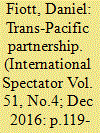

|
|
|
|
|
| Summary/Abstract |
The Trans-Pacific Partnership, if ratified by all parties, is likely to have ramifications for the global defence market and the US’ economic and political strategy towards the Asia-Pacific region. Although the TPP excludes a number of defence-related issues such as defence procurement, the TPP’s provisions on technology transfers and intellectual property rights could bolster the US’ military-technology relations with the Asia-Pacific. For Europe, which is excluded from the Partnership, the likely impact of TPP is uncertain and could raise important challenges and opportunities related to Europe’s own defence-industrial relations with the Asia-Pacific and its wider security role in the region.
|
|
|
|
|
|
|
|
|
|
|
|
|
|
|
|
|
|
|
|
|